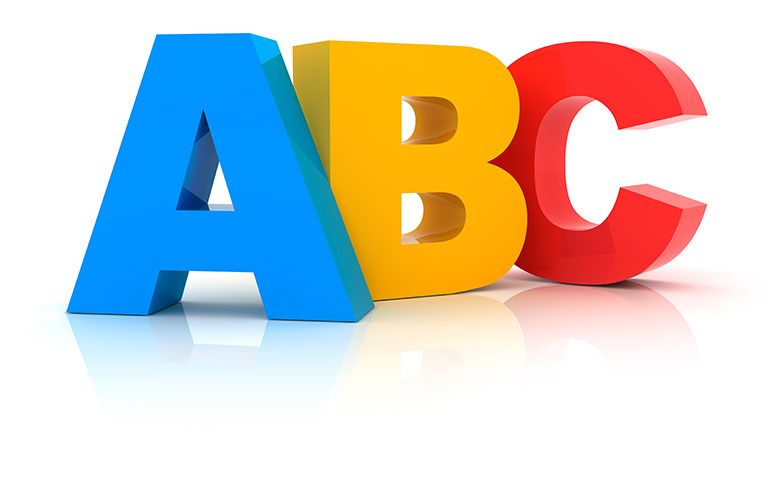Orton-Gillingham

What is the Orton-Gillingham Approach?
The Orton-Gillingham Approach to reading instruction was developed in the 1930’s by Neurologist Dr. Samuel T. Orton, and educator, psychologist Anna Gillingham.
The Orton-Gillingham approach was designed primarily to help with reading, writing and spelling but it can also be successfully used with students who are experiencing difficulty with mathematics.
The Orton-Gillingham approach allows the teacher to recognize an individual student’s dominant learning modality while delivering instruction that will aid in strengthening the remaining learning pathways. Teachers provide direct instruction, explaining what is to be learned, why it is to be learned, and how it is to be learned.
Orton-Gillingham Strategies and Tools
Orton-Gillingham is a language-based, multisensory, structured, sequential, cumulative, cognitive, and flexible approach.
The multisensory educational component integrates the three learning pathways, which are auditory, kinesthetic, and visual. All language skills taught are reinforced by having the student listen, speak, read and write. Because this approach impacts all children, it is not limited to dyslexia and is beneficial for every type of learner.
Orton-Gillingham is taught systematically.
Sound-symbol connections along with linguistic rules are introduced in a logical and understandable order. Students begin by reading and writing sounds in isolation. They blend the sounds into syllables and words. Consonants, vowels, digraphs, blends, and diphthongs are taught sequentially. Once these are mastered, advanced structural elements such as syllable types, roots, and affixes are taught. Vocabulary, sentence structure, composition, and reading comprehension are also taught in a comparable manner.
Students are provided with constant reinforcement of old and new material. Any misunderstood rule is re-taught from the beginning.
Students learning with the Orton Gillingham approach can apply language patterns with understanding. They are taught the history and rules of the English language.
Orton Gillingham can be implemented individually in a 1-on-1 setting. It can be applied as early as Pre-K and executed all the way up through college level students. It can be used for adults too!

A New Way: Structured Literacy Approach
Structured Literacy education techniques have been recognized as the most effective approach for remediating deficiencies in reading and spelling for learners who have an unusual difficulty mastering these tasks. The term Structured Literacy refers to both the content as well as the methods or principles of instruction. This approach is related to and in some cases identical to approaches like structured language and literacy or multisensory structured language education.
Structured Literacy teaches oral and written language skills in an explicit, systematic manner and stands in contrast with approaches that many schools employ. Strong evidence shows that the majority of students learn to read better with Structured Literacy methods of teaching basic language skills. The components and methods of Structured Literacy are pivotal and life changing for students with disabilities such as dyslexia or dysgraphia.

Structured Literacy Instruction: Language is Key
Most reading disorders, including dyslexia, originate with language processing weaknesses. Structured Literacy therefor targets all parts of language. These different parts are: sounds, spellings for sounds and syllables, patterns and conventions of the writing system, meaningful parts of words, sentences, paragraphs, and discourse within longer texts.
Phonemes: Sounds of Speech
Becoming consciously aware of the individual speech sounds, called phonemes, which make up words is crucial for setting a strong foundation in reading and spelling learning. What is a phoneme? A phoneme is the smallest unit of speech that can change the meaning of a word. Take for example the words mist, mast, must, and most. By simply employing a different vowel phoneme, we create these 4 unique words. There are roughly 43 phonemes–25 consonants and 18 vowels-in the English language.
Early in a child's education, the underpinnings of phonemic awareness are a major focus. These include: rhyming, counting spoken syllables, and reciting phrases beginning with the same sound. Entering first grade, a child should be able to identify each phoneme by ear and be able to break apart the unique sounds of simple words that have two or three syllables.
As they move forward, advanced phonemic awareness skills are taught that are especially important for spelling and reading. These include segmentation (rapidly and accurately taking apart the sounds in spoken words), Blending (putting together speech sound sequences), and Deleting (leaving out or substituting one sound for another to make a new word). These exercises are done orally and should continue to be a part of instruction until a student has become a proficient reader. These advanced phonemic skills can be a major problem for learners who have dyslexia and they require intensive and prolonged practice to master.
Phonemic awareness is an essential foundation for reading and writing. English uses letters and letter combinations to represent phonemes. It is essential that a reader can map the printed text to speech and Structured Literacy works to help decode the text and make the reader aware of the different parts of speech.
Sound-Symbol Knowledge: Letters to Sounds
English represents phonemes with graphemes; Graphemes are letters such as a, b, c, etc. or letter combinations like th, igh, ng, and so on. These graphemes directly represent the phonemes of speech. To read successfully, a learner must be able to map the graphemes to the corresponding phonemes. This is often referred to as "the phonics code", "the alphabetic code", or "the written symbol system".
The relationships between letters and speech sounds in English are more complex and variable than some languages. However, using systematic, explicit and cumulative instruction over the course of several years the correlations can be taught successfully.
Orthography: Patterns and conventions of printed language
Students with dyslexia and other disabilities can be taught to understand and remember patterns of letters used in the English writing system through explicit instruction and practice. There are many common patterns in English, for example, some spellings for consonant sounds, such as –ck, –tch, and –dge, are used only after a short vowel in a word. Some letters, such as j or v, never appear at the ends of words. Additionally, some letters may be doubled, such as the double 'l' in 'roller' while some letters work to signal the sounds of other letters. These patterns can all be taught as part of the print system, also known as Orthography.
Syllables also have similar patterns for representing vowel sounds. Nearly every written syllable in the English language includes vowel grapheme. Structured Literacy identifies six types of written syllables: closed (com, mand), open (me, no), vowel-consonant-e (take, plete), vowel team (vow, mean), vowel-r combinations (car, port), and the final consonant-le pattern (lit-tle, hum-ble). Understanding these written syllable patterns allows a reader to break up longer words into smaller, more easily understood pieces, and helps decode various spelling conventions such as doubling of consonant letters, as in: 'little' and 'rattle'.
Morphology: The Meaning of Words
A morpheme is the base unit of meaning in a written language. These include prefixes, roots, base words, and suffixes. These pieces of meaning are almost always spelled consistently although the pronunciation can change as they are combined with other morphemes to form words. The de- in define and definition or the na- in nation or national are great examples. A knowledge of morphemes allows a reader to decode words they may have never seen before and help spelling words such as at-tract-ive or ex-press-ion.
Syntax: Words in the Correct Order
Syntax is the name for the ordering of words in sentences. Syntax is what gives a series of words a useful communicative meaning. Mastering syntax includes understanding parts of speech and conventions of grammar and how to best use words sentences to effectively convey meaning. Structured Literacy focuses on the interpretation and formulation of sentences, whether simple, compound, or complex. Phrases and clauses and their use in in sentence construction is also an area of focus.
Semantics: The Meaning
Meaning is conveyed both by single words as well as phrases and sentences. Oral and written language comprehension is developed by teaching vocabulary, interpretation of phrases and sentences, and understanding of text organization in language.
Comprehension requires both word recognition and language comprehension and Structured Literacy supports students as they work with many kinds of texts. Stories, informational text, poetry, drama, and so forth, even if that text is read aloud to students who cannot yet read it themselves, is presented to help build comprehension. Structured Literacy encourages reading worthwhile texts that stimulate deep thinking and critical understanding.
Principles and Methods of Structured Literacy
Explicit Instruction
In Structured Literacy instruction, direct and clear explanations are provided for each concept, providing guided practice. Instruction features routines that aid in retention. These include such routines as practice drills to build fluency, finger tapping sounds before spelling words, and many others. With feedback and guidance each new skill is incorporated into the student's reading and writing.
Systematic and cumulative
In a Structured Literacy approach, the teacher presents each language concept systematically and explains how each concept contributes to language as a whole. A planned scope and sequence are used, featuring skills that progress from basic to more advanced. Each concept supports and builds on another. Thus, the student has a mastery of each piece of language as they become more proficient.
Hands-on, engaging, and multimodal
Structured Literacy methods include hands-on learning in a multi-sensory fashion. These include manipulatives, gesture-based associative techniques, and so forth. Listening, speaking, reading, and writing are often paired with one another to foster multimodal language learning.
Diagnostic and responsive
The teacher uses student response and mastery to adjust the pace, presentation, and amount of practice presented. Progress is monitored through observation and normed assessments that faithfully demonstrate the level of retention of previously presented skills.
